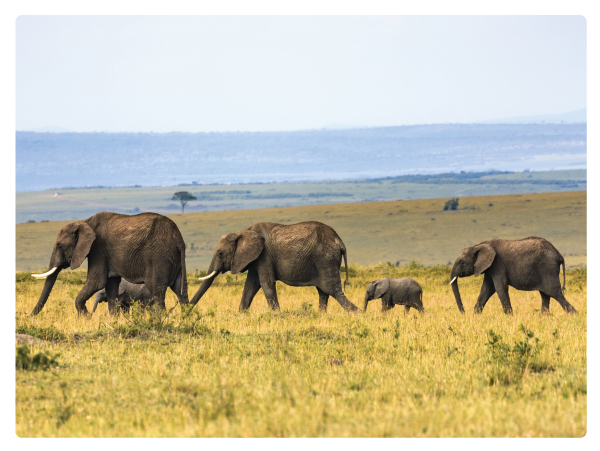FUN FACTS ABOUT ELEPHANTS
CLICK ON THE IMAGES TO READ MORE ABOUT EACH FEATURE OF AN ELEPHANT
HOW MUCH DO ELEPHANTS EAT AND DRINK?
Because the digestive system of elephants does not allow for that many nutrients to be digested, an elephant needs to consume even more food to ensure proper nutrition. On average, an elephant will eat about 300kg of vegetation, seeds, nuts and fruit, and drink about 200l of water every day.
WHAT IS THE DIFFERENCE BETWEEN AFRICAN AND INDIAN ELEPHANTS?
African Elephants are considerably larger and have very little hair in comparison to the Asian Elephant. The biggest and most easily recognisable difference is the ears and the tusks. The African Elephants have large tusks and large ears, which slightly resemble the African continent. The Indian Elephant has small ears that lie close to the head and their tusks are considerably smaller if they do have any. The head of the Asian Elephant has a distinct dip in the middle when looked at head on.
DOES ELEPHANTS NEVER FORGET?
Elephants certainly have one of the best memories of the mammalian species, quite possibly due to their larger brains. The question of whether they never forget has been answered in the affirmative and has been backed by science. The matriarchs especially recognize friendly faces and, the older they are, the better their memory seems to become.
ELEPHANTS TRUMPET
The trumpeting sound is used to denote excitement and anger, or simply to communicate over a long distance.
ELEPHANT FAMILY STRUCTURE
Elephants have a matriarchal head. The family will consist of an older matriarch, her daughters (usually about 3 or 4 of them) and their calves. A typical elephant family usually comprises 6 to 12 individual elephants, but can expand to a larger group of 20. These females will assist each other with the birth and care of their young. This "babysitting" is a very important part of the young elephant's development as it prepares her for when she is a first-time mother. The matriarch is replaced by one of her daughters (usually the oldest) when she dies.
ELEPHANT INTELLIGENCE
Elephants are recognized as being among the most intelligent creatures on earth. Proportionally, the elephant's brain is the biggest and can weigh just over 5kg. Although the largest whale is 20 times the body size of an elephant, its brain is just under twice the size. The need for such a large and complex organ becomes clear when we consider the behaviors and abilities of these animals. Elephants are capable of a range of emotions, including joy, playfulness, grief and mourning. In addition,elephants are able to learn new facts and behaviors, mimic sounds that they hear, self-medicate, play with a sense of humour, perform artistic activities, use tools and display compassion and self-awareness.
Elephants have a highly developed brain and the largest of all the land mammals. The brain is 3 or 4 times larger than that of humans although smaller as a proportion of body weight.








